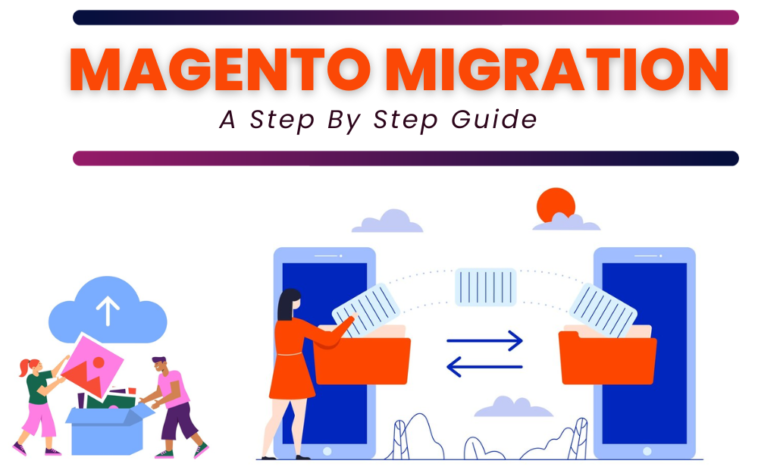Cost of Magento Migration: What to Expect and How to Budget

Migrating your e-commerce store from Magento 1 to Magento 2 (or from another platform to Magento) is a significant undertaking that offers many benefits, including enhanced performance, better security, and access to new features. However, the migration process involves several costs that you need to plan for in advance. Without a proper budget, unexpected expenses can derail your project. In this blog, we’ll break down the key factors influencing the cost of Magento migration, what you should expect, and how to create an effective budget for the process.
1. Why Migrate to Magento 2?
Magento 2 offers a host of improvements over its predecessor, including:
- Improved performance with faster page loads and smoother user experiences
- Enhanced security features to protect against online threats
- Mobile-friendly designs to optimize performance across devices
- Advanced extensions for customization
- Better scalability for growing businesses
If your business is still using Magento 1, it’s crucial to migrate since support and security updates for Magento 1 officially ended in 2020. A Magento Migration Service Company can help ensure a smooth transition while minimizing risks.
2. Key Cost Factors in Magento Migration
The total cost of migrating to Magento depends on several factors, including the size and complexity of your store. Below are the primary cost components you need to consider:
a) Data Migration
The migration process involves transferring all essential data, such as product catalogs, customer information, orders, and content pages. If your store contains a large volume of data, the migration will take more time and may require specialized tools to avoid data loss or errors.
- Estimated cost: $1,000 – $5,000, depending on the amount of data and its complexity.
b) Theme Development or Redesign
Magento 1 themes are not compatible with Magento 2, meaning you’ll need to create a new theme or redesign your existing one. Depending on your brand’s requirements, you can opt for a pre-built theme or invest in a fully customized design.
- Pre-built theme: $100 – $500
- Custom design: $5,000 – $25,000, depending on complexity
c) Extension and Plugin Migration
Magento 1 extensions are incompatible with Magento 2, so you’ll need to reinstall or replace plugins. Some Magento 2 plugins may need customization to work seamlessly with your store.
- Estimated cost per extension: $200 – $2,000
- Total cost: $2,000 – $10,000, depending on the number of extensions
d) Development and Customization Costs
Most Magento migrations require back-end development to customize features, configure third-party integrations, and align the new store with your business processes. Hiring developers with Magento expertise is essential to avoid issues during migration.
- Hourly rate for Magento developers: $50 – $150
- Total cost: $10,000 – $50,000, depending on customization needs
e) Testing and Quality Assurance
Thorough testing is essential to ensure that the new store runs smoothly and provides a seamless user experience. This phase includes testing payment gateways, shipping methods, and other critical features.
- Estimated cost: $2,000 – $5,000
3. Additional Costs to Consider
a) SEO and URL Redirects
SEO is a crucial part of migration to prevent loss of search engine rankings. The migration involves setting up 301 redirects from old URLs to new ones and ensuring metadata is properly configured.
- SEO services cost: $1,500 – $5,000
b) Hosting and Performance Optimization
Magento 2 requires powerful hosting infrastructure to support its advanced features and ensure fast load times. You may need to upgrade your hosting environment or move to a cloud-based solution.
- Hosting cost: $100 – $500/month
c) Training and Support
Your team will need some training on how to use Magento 2’s admin panel and new features. Some Magento migration Experts offer post-migration support to resolve any technical issues that arise after launch.
- Training cost: $500 – $2,000
- Support contract: $1,000 – $3,000/year
4. How to Budget for Your Magento Migration
Creating a detailed budget for your Magento migration project is crucial to avoid overspending. Here are some tips to help you plan effectively:
- Start with an Audit: Evaluate your existing store and determine what needs to be migrated, redesigned, or customized. This will give you a rough estimate of the costs.
- Work with a Magento Migration Service Company: Hiring experienced professionals ensures the migration is smooth and avoids costly mistakes. Get multiple quotes from companies to compare prices.
- Prioritize Features: Decide which features and customizations are essential for launch and which can be added later. This can help reduce initial costs.
- Allocate a Contingency Fund: Set aside 10-15% of your total budget for unexpected expenses that may arise during the migration.
- Plan for Post-Migration Expenses: Include hosting, SEO, and support services in your budget to ensure ongoing performance after the migration is complete.
5. Choosing the Right Magento Migration Service Company
Selecting the right migration partner is key to the success of your project. Look for a company that offers:
- Extensive Magento experience with proven expertise in both Magento 1 and Magento 2
- End-to-end services, including data migration, theme development, and post-migration support
- Clear pricing and timelines to help you plan your budget effectively
- Positive reviews and case studies from previous clients
6. Conclusion
Migrating to Magento 2 is a worthwhile investment that can enhance your store’s performance, security, and user experience. However, it’s essential to understand the various cost factors involved, including data migration, theme development, extensions, and customization. Working with a Magento Migration Service Company ensures that the process runs smoothly, minimizing downtime and unexpected expenses.
By carefully budgeting and planning ahead, you can control costs and enjoy the long-term benefits of a faster, more reliable e-commerce platform. With the right strategy and support, your business will be well-prepared to grow and thrive on Magento 2.




